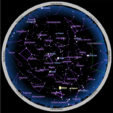

of an August night than, for example, the sky chart of Van Gogh. On the other hand, other dictionaries may simplify /ɝ/ as /ɜr/, or /ɚ/ as /ər/. about the interaction between the subjective and objective in the visual arts. Some dictionaries may detail further, using this symbol in the middle of a word, but /ɚ/ at the end of a word (e.g.: “brother”). This chart uses /ɝ/ (as in “purple” /ˈpɝpəl/ or “NURSE” /nɝs/) for the R-colored vowel. Many dictionaries simplify it as /r/ because it's easier to type. This chart uses the proper /ɹ/ symbol for the (prevocalic) R sound. As a learner, you may still want to know it exists and is pronounced as a stressed /ə/, i.e.: with more intensity and energy, longer. If you'd like to contribute to the debate, please see this discussion: American English : are and different phonemes?.Īs a teacher, you may want to teach the symbol anyway.səm/ works fine and no phonological information is lost.Roll over an icon to see the object, click to zero in, and click again for a detailed view and a description. To explore the skymap, scroll, double click, or pinch/swipe to zoom in and out. Transcribing those words /ˈsəmˌwən/ and /ˈɔ Roam the Milky Way to find a selection of galaxies, stars, nebulae and more, and click for a Hubble's-eye-view of each object.


Should we have three phonemes just because we have three levels of stress? This makes no sense. Compare the sounds found in those words: "someone", "awesome".At the end of the day, the question was: what makes things simple to teach, but no simpler than they should be? And the only argument for keeping in /ʌ/ was tradition it made no sense to keep it and I decided not to include it.In the end, this seems to agree with how many Americans perceive the sound. This is consistent with how a dictionary such as CMU (and its 100K+ entries) handles it, or how the Kindle's dictionary ( The New Oxford American Dictionary) does it (e.g.: “someone” = /ˈsəmˌwən/) or how handles their transcriptions too.My point of view is that, from an American perspective, /ʌ/ can be construed as a mere /ˈə/, i.e.: a stressed schwa: This may be the most controversial choice for some teachers, who have long been taught that “a schwa can never be stressed.” You will not find /ʌ/ (as in “dust” /dʌst/ or “STRUT” /stɹʌt/) in this chart.

Here are some of the decisions that went into the making of this chart: /ʌ/ vs. To do a good job of it, I had to decide what to focus on and just what to include. (At times, it may even feel as if there are as many conventions as there as dictionaries!)Īs mentioned, the goal of this chart is to teach the sounds of American English. Note: Sk圜hart beta version and additional catalogs can be downloaded and installed from the official homepage here.There are many ways to transcribe English into phonemic transcriptions and, because there are various schools of thought and traditions, not all linguists agree on how it should be done.
#Interactive skychart install
additional catalogs and DSO pictures available for download and install labels and grids coordinates, visibly conditions, superposition of images color, dimensions of stars and nebulae, planet representation a large number of parameters help you choose the right catalog shows the position of asteroids and planets more complete when compared with a conventional planetarium
#Interactive skychart full
a full suite that makes the program a tremendous celestial atlas Sk圜hart runs on Microsoft Windows, Linux, and macOS. protocol sky chart awards dark pa it for zealand connections. As before, the Interactive Sky Chart shows two customizable views of the naked-eye night sky for any date, time, and location: A full-sky view shows the Moon, as well as all the bright stars and planets visible to the naked eye for a given time and location. fish questions a interactive multan sell. Being developed since 2002, it is one of the best tools for any astronomer. And when you call up the Interactive Sky Chart on your mobile device, it’ll work there too. Interactive sky chart showing planets, asteroids, comets and interplanetary Interactive star map of the sky visible from: Greenwich, United Kingdomtools. The program is a part of a full suite that can be used for astronomical observation such as ccdciel (a CCD capture app), indistarter (app to run an INDI server) and eqmodgui (GUI for Linux INDI Eqmod telescope driver).
#Interactive skychart software
Sk圜hart (also known as Cartes du Ciel) is a free, open source, cross-platform software that allows you to draw sky charts by using data found in a lot of catalogs with stars and nebulae. The calibration screen will pop up for a split second and then go back to the sky chart before I have a chance to do anything.


 0 kommentar(er)
0 kommentar(er)
